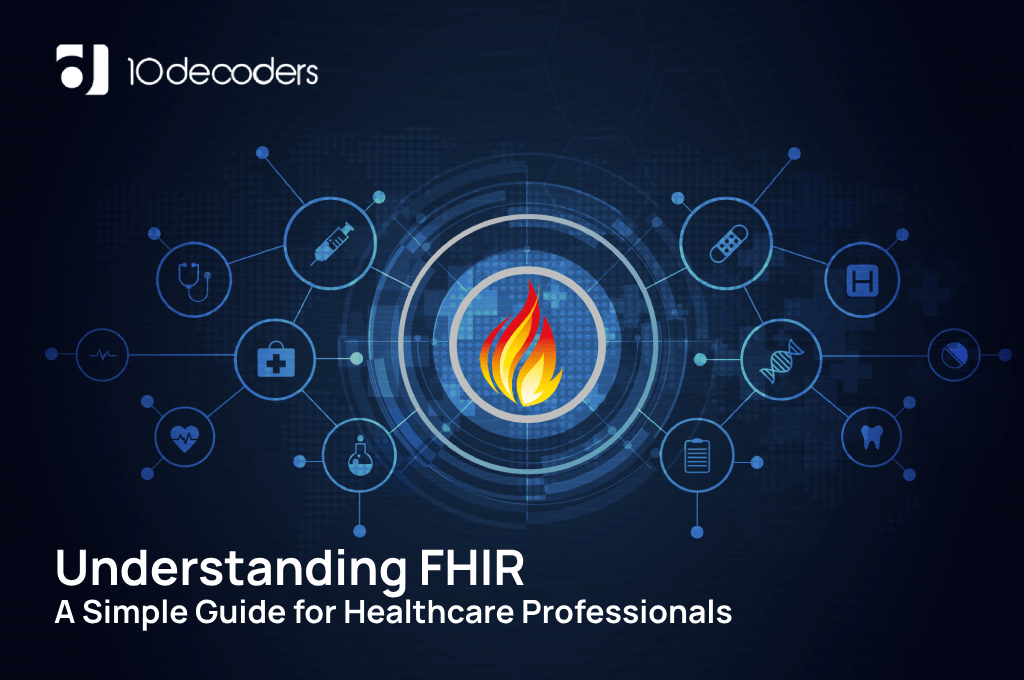Understanding FHIR: A Simple Guide for Healthcare Professionals
The future is not too far where a patient’s medical history seamlessly follows them wherever they go, no matter which hospital, lab, or clinic they visit. This is the promise of FHIR, a healthcare data standard that’s revolutionising how information flows in the medical field.
But if you’re a healthcare professional unfamiliar with FHIR, it might sound like a complex alphabet soup of technical jargon. Fear not! This blog post is your friendly guide to demystifying FHIR and understanding why it matters for you and your patients.
What is FHIR?
FHIR stands for Fast Healthcare Interoperability Resources. Think of it as a common language for healthcare data. It defines a standard way to structure and share medical information, like medications, allergies, diagnoses, and lab results. This enables different healthcare systems to “talk” to each other, breaking down the silos that have traditionally kept patient data locked away.
Why is FHIR important?
Traditionally, healthcare data has been trapped in isolated systems, making it difficult for healthcare providers to get a complete picture of their patients’ health. This can lead to:
- Duplication of tests and procedures: Without access to a patient’s full medical history, healthcare providers might order unnecessary tests or treatments.
- Medication errors: Lack of complete information about a patient’s medications can lead to potentially dangerous interactions.
- Delayed diagnoses and treatment: Incomplete or inaccessible data can hinder timely diagnosis and treatment of serious conditions.
FHIR changes the game by making it easier to share patient data securely and efficiently. This has numerous benefits for both patients and healthcare professionals
For patients
- Improved care coordination: With their data readily available, patients can receive more coordinated care from different providers.
- Empowerment and engagement: Access to their own health data can empower patients to make informed decisions about their care.
- Reduced administrative burden: Patients won’t need to repeat the same information multiple times at different healthcare providers.
For healthcare professionals
- Improved care coordination: With their data readily available, patients can receive more coordinated care from different providers.
- Empowerment and engagement: Access to their own health data can empower patients to make informed decisions about their care.
- Reduced administrative burden: Patients won’t need to repeat the same information multiple times at different healthcare providers.
How does FHIR work?
FHIR uses modern web technologies like REST APIs and JSON to exchange data. This makes it flexible, lightweight, and easy to implement compared to older healthcare data standards. Think of it like sending an email with medical information instead of relying on bulky fax machines or paper records.
Getting started with FHIR
The good news is that you don’t need to be a tech expert to leverage FHIR. There are numerous resources available to help healthcare professionals get started:
- HL7 FHIR website: The official FHIR website provides comprehensive documentation, tutorials, and training materials.
- Online communities and forums: Join online communities like the FHIR subreddit or attend webinars to connect with other healthcare professionals using FHIR.
- Software solutions: Many software vendors offer FHIR-enabled solutions that can help you integrate FHIR into your workflow.
The future of healthcare with FHIR
FHIR is rapidly gaining momentum in the healthcare industry. As more healthcare organisations and providers adopt FHIR, we can expect to see:
- Improved patient outcomes: With better data sharing and access, patients will receive more personalised and effective care.
- Reduced healthcare costs: Streamlined data exchange can lead to reduced administrative costs and more efficient use of healthcare resources.
- New innovations: FHIR will enable the development of new healthcare applications and tools that leverage the power of data to improve patient care.
In conclusion, FHIR is not just another technical jargon. It’s a game-changer for the healthcare industry, with the potential to revolutionise the way we deliver and experience healthcare. As a healthcare professional, understanding FHIR and its benefits can put you at the forefront of this transformative change.
Remember, even small steps towards FHIR adoption can make a big difference. Start exploring the resources available today and take advantage of the opportunities FHIR offers to improve your practice and provide better care for your patients.



